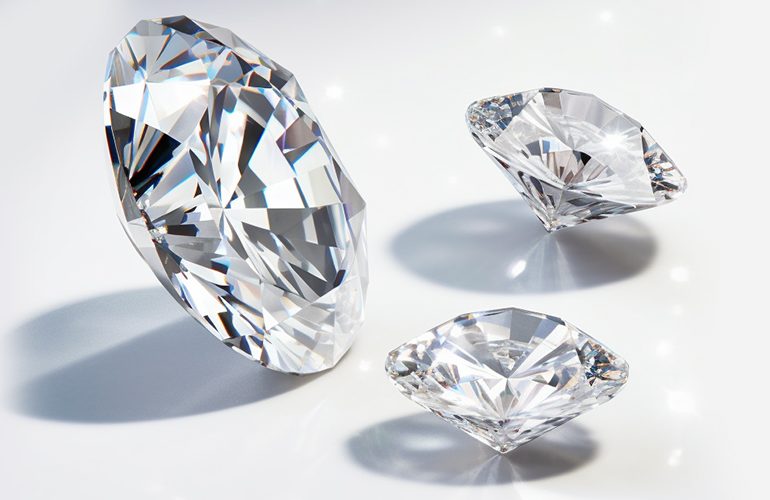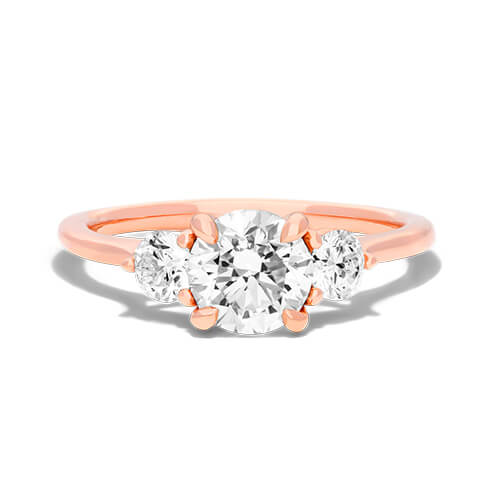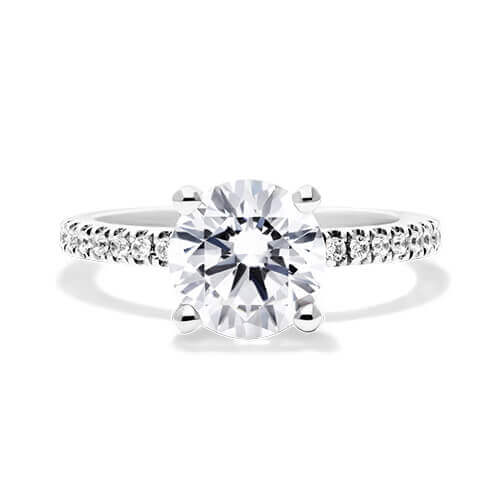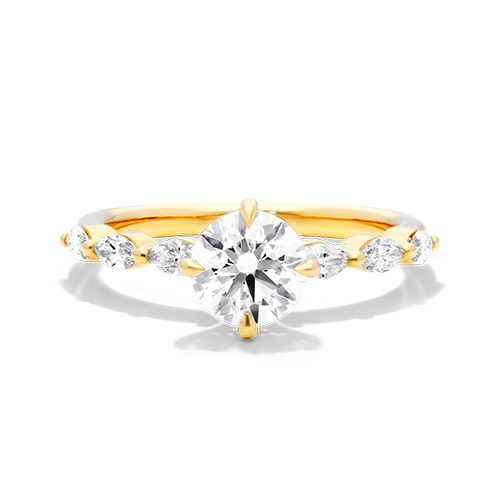Debating between moissanite vs. diamonds? We’re breaking down everything there is to know about moissanite, natural diamonds, and lab grown diamonds to help you choose which center stone will suit your dream ring best!
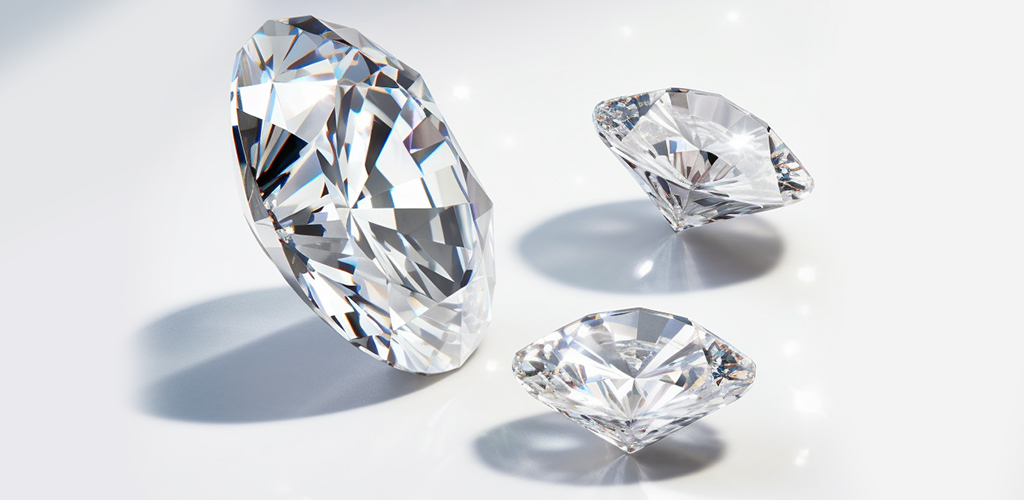
Table of Contents
What Is Moissanite?
Moissanite has a different chemical makeup from natural and lab grown diamonds. While a diamond is pure carbon, moissanite is both silica and carbon. As a result, Moissanite sparkles differently, more even, and is slightly less hard than a diamond. However, it does look nearly identical to a diamond!
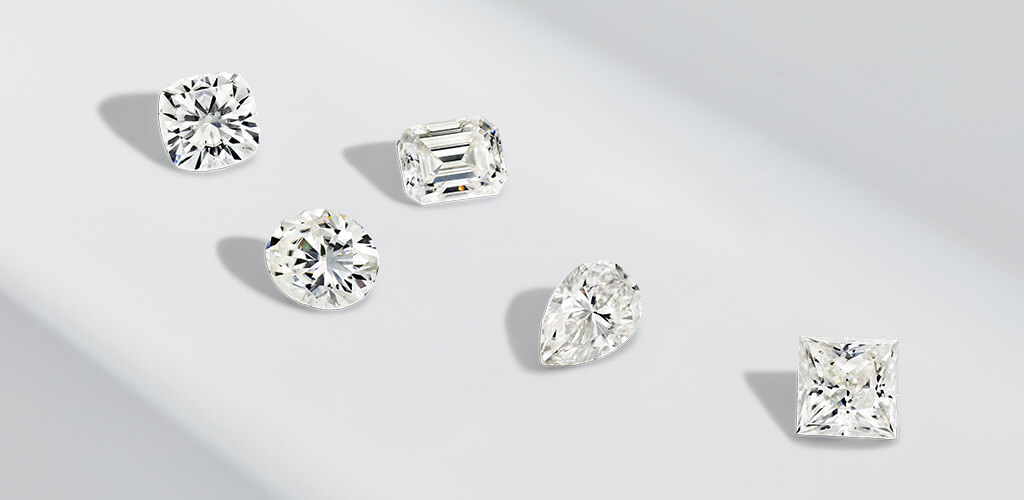
What Is A Lab Grown Diamond?
A lab grown diamond, also known as a man-made diamond is a diamond that is formed in a lab instead of the earth’s crust (don’t you just love science?) Lab diamonds are chemically and optically identical to natural diamonds, the only difference is in the price tag! You’ll find that lab diamonds are three times less expensive than natural diamonds.
Remember, lab grown diamonds ARE real diamonds!
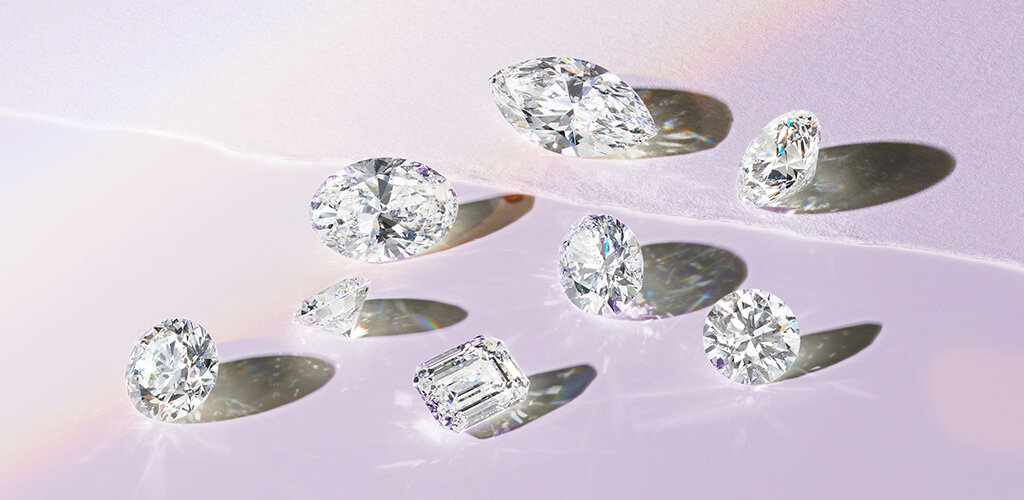
What Is A Natural Diamond?
A natural diamond is a gemstone found deep in the earth’s crust, formed over millions of years, and mined all over the world. Also known as the April birthstone, diamonds are the rarest of all gemstones and the most sought-after center stone for engagement rings.
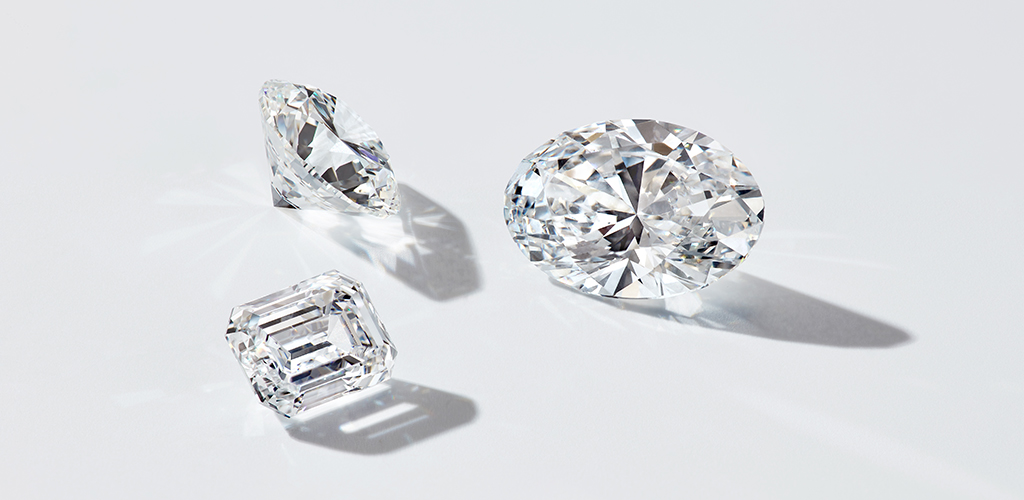
Moissanite vs Diamonds Buying Tips
Never be afraid to ask the hard question when it comes to choosing the right gem for your engagement ring. Not all of us require a diamond, and some of us want one but would prefer an option that doesn’t break the bank. So, what questions should you be asking?
- Create a Budget: Set a spending limit to help narrow your options and avoid overspending.
- Research and Compare: Learn the differences between moissanites and diamonds to make an informed decision.
- Decide on Priorities: Determine what features matter most to you, like size, sparkle, or ethical sourcing.
- Understand the 4 Cs: For diamonds, know the Cut, Color, Clarity, and Carat weight. For moissanites, consider similar qualities.
- Choose a Reputable Vendor: Buy from trusted jewelers with certifications and good reviews, and check their return policies.
- Get Certifications: Ensure diamonds have grading reports from reputable labs like GIA or AGS, and moissanites have authenticity certificates.
- Review Return and Warranty Policies: Ensure the vendor offers a clear return policy and check for warranties.
- Consider Long-Term Care: Learn about the maintenance needed to keep the stone looking its best.
- Understand Resale Value: Know that natural diamonds may hold resale value, while moissanites and lab created diamonds usually don’t.
Moissanite vs. Natural Diamonds vs. Lab Grown Diamonds
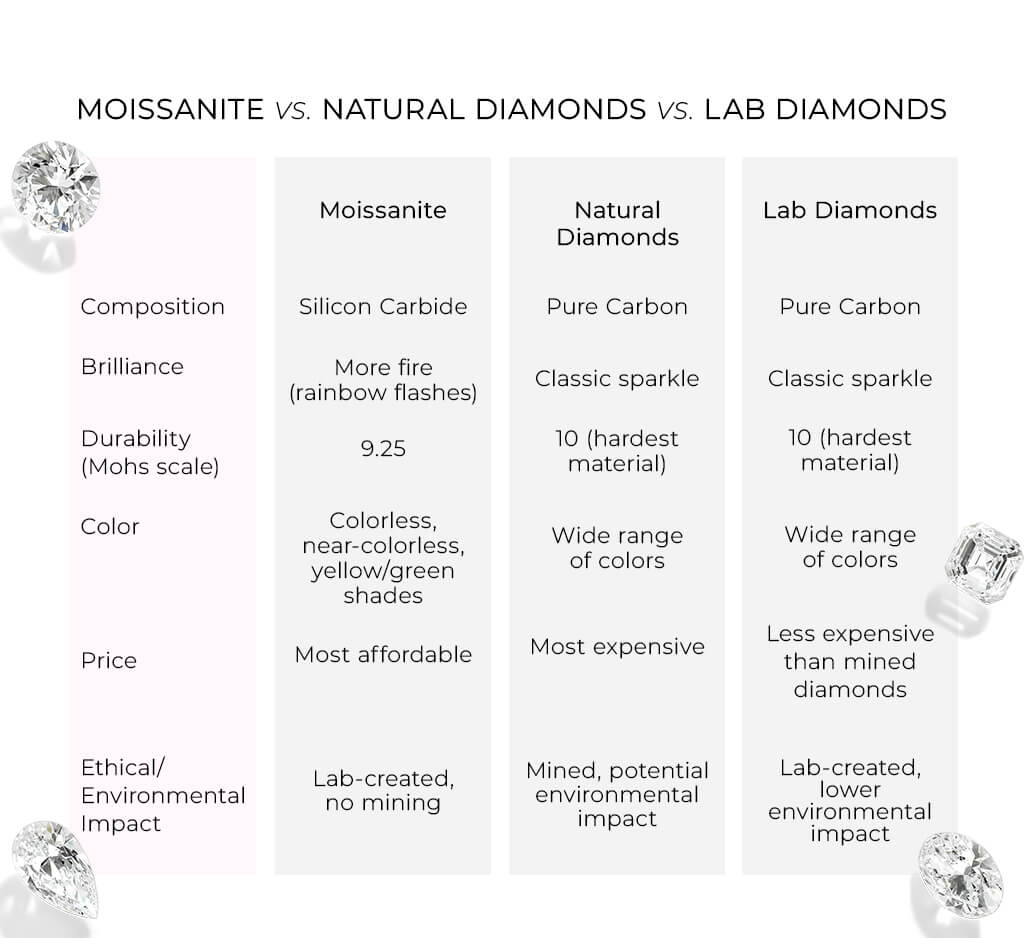
As you can see from the table above, moissanite and diamonds have their advantages, but what sets them apart from one another?
Color
Moissanite comes in colorless, near-colorless, and yellow/green shades. This is perfect if you’re looking for a more traditional-looking center stone. On the other hand, natural and lab diamonds come in every color under the rainbow. You will have no trouble finding an affordable white diamond or a fancy color diamond.
Price
On average, a lab grown diamond engagement ring will cost three times less than that of its natural diamond ring counterpart. But a diamond, regardless of its origin, may still prove to be too costly for a young couple or a couple with a tight budget.
That’s where moissanite certainly has an advantage. If you choose to go with a moissanite engagement ring, you’ll pay almost four times less than that of a lab created diamond ring and even less than that of a ring with a natural diamond center stone.
Estimated Price Comparison: Moissanite vs. Natural Diamonds vs. Lab Grown Diamonds
| Carat Size | Moissanite (USD) | Natural Diamond (USD) | Lab-Grown Diamond (USD) |
|---|---|---|---|
| 0.50 ct | $1,000 – $2,000 | $3,500 – $6,000 | $2,500 – $4,000 |
| 1.00 ct | $2,000 – $3,000 | $7,000 – $12,000 | $5,000 – $8,000 |
| 1.50 ct | $3,000 – $4,500 | $12,000 – $18,000 | $8,000 – $12,000 |
| 2.00 ct | $4,000 – $6,000 | $18,000 – $25,000 | $12,000 – $16,000 |
| 3.00 ct | $6,000 – $8,000 | $30,000 – $40,000 | $18,000 – $24,000 |
| 4.00 ct | $8,000 – $12,000 | $45,000 – $60,000 | $25,000 – $32,000 |
If you’re looking to maximize your budget and the size of your center stone, a moissanite ring may be the best option. However, if having a real diamond is important to you or your partner, a lab diamond is definitely the better choice and will still allow you to get a stunning gem of high quality.
Origins
Both lab diamonds and moissanite are made in safe lab environments with fair wages. There’s also no destructive mining involved. Natural diamonds are however earth-made. They’re mined from different continents around the globe.
Durability
A gemstone’s durability is measured using the Mohs hardness scale. FYI, diamonds are the hardest substance on earth, rating a 10 on the Mohs hardness scale!
Moissanite doesn’t do too badly either, coming in a close second at 9.25 on the scale. This means your moissanite ring will remain clear and unscratched. In fact, the only thing hard enough to scratch it would be a diamond.
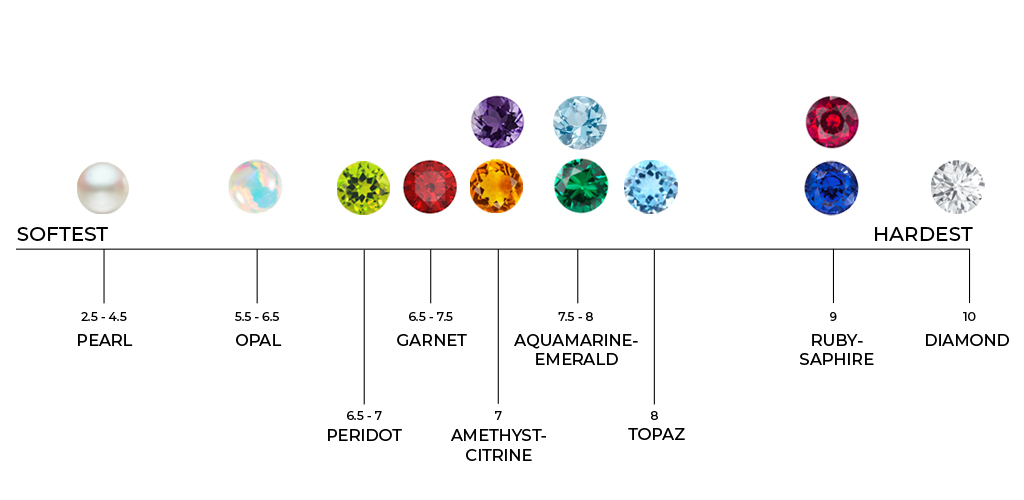
Can You Really Tell the Difference Between Moissanite and a Diamond?
Yes. If you looked at moissanite engagement rings up close, you’d notice the distinctive sparkle. Not only does moissanite sparkle brighter than diamonds, but it also sparkles more colorfully, too.
Where Can You Buy An Engagement Ring With A Diamond Or Moissanite Stone?
Where you buy your engagement ring is a very important choice. Most, if not all, online jewelry retailers have a larger selection of engagement ring settings, diamonds, and diamond alternatives. They also have more advanced technological features and are usually much more affordable than store-bought engagement rings.
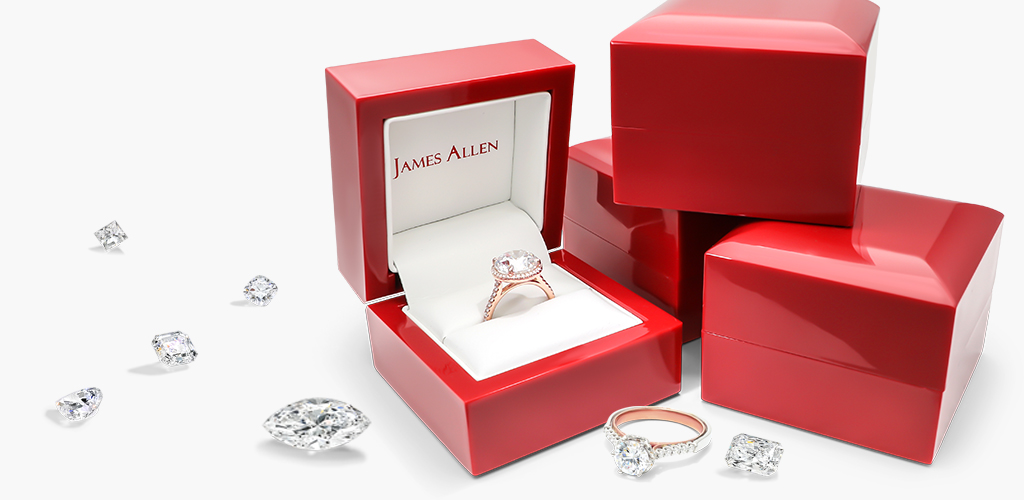
FAQs
Is moissanite a real stone?
Yes, moissanite is a real and naturally occurring mineral. However, the moissanite used in jewelry is typically lab made due to its rarity in nature.
Is moissanite worth buying?
Moissanite can be a great alternative to traditional diamonds, offering exceptional brilliance and fire at a more affordable price point. Its durability and unique optical properties make it a popular choice for engagement rings and other jewelry.
Is there a downside to lab grown diamonds?
Potential downsides include perceived value differences and the absence of natural rarity, which can affect resale or sentimental value for some individuals.
Are lab grown diamonds considered to be real diamonds?
Yes, lab grown diamonds are considered real diamonds as they have the same chemical composition, physical properties, and optical characteristics as natural diamonds. The main distinction is their origin.
Let’s Wrap It Up
Diamonds and moissanite are both equally good alternatives to natural diamonds. If your main concern is a tight budget, but you still want a white stone that will last and sparkle forever while looking like a diamond, moissanite is your guy!
But if you’re a socially conscious shopper who still prefers a traditional diamond ring with an affordable price tag, lab grown diamonds are your best bet.
SHOP RELATED PRODUCTS
Subscribe to our email list for access to secret sales, practical ring-buying tips, and $100 off your first purchase!
Jessica is a seasoned content writer with four years of experience and a qualified gemologist. She enjoys educating new shoppers on the best practices for buying jewelry.

